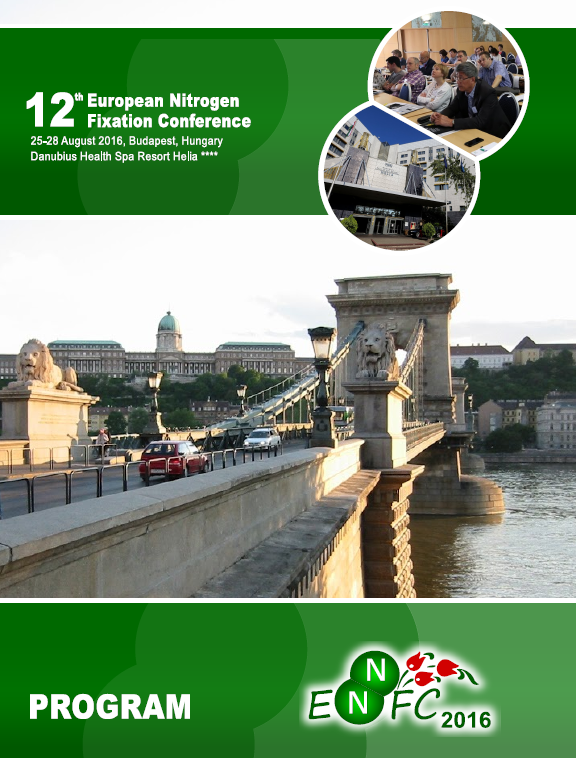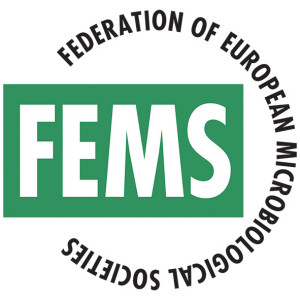Scientific program
Overview timetable
Please click the picture to open in a new window
Book of abstracts |
Detailed program |
Please click the picture to see the detailed program in pdf.
|
25th August (Thursday) |
||
|
10:00-17:00 |
REGISTRATION AND POSTER INSTALLATION |
|
|
17:00-17:30 |
WELCOMING ADDRESS |
|
|
17:30-17:45 |
Introduction to the Kondorosi Award |
|
|
17:45-17:50 |
Presentation of the Kondorosi Awardee |
|
|
17:50-18:20 |
Lecture of the Kondorosi Awardee |
|
|
18:20-19:00 |
EMBO Lecture |
|
|
19:00- |
WELCOME RECEPTION |
|
|
26th August (Friday) |
||
|
09:00-09:30 |
Plenary lecture 1P1 | Chair: Gabriella Endre |
|
|
09:30-10:00 |
Plenary lecture 1P2 | Chair: Gabriella Endre |
|
|
10:00-10:30 |
Plenary lecture 2P1 | Chair: Gabriella Endre |
|
|
10:30-11:00 |
COFFEE BREAK |
|
|
11:00-11:30 |
Plenary lecture 3P1 | Chair: Éva Kondorosi |
|
|
11:30-12:00 |
Plenary lecture 3P2 | Chair: Éva Kondorosi |
|
|
12:00-12:30 |
Plenary lecture 4P1 | Chair: Éva Kondorosi |
|
|
12:30-14:00 |
LUNCH |
|
|
14:00-15:40 |
Parallel section 1 |
Parallel section 2 |
|
15 min talks |
Florian Frugier |
Yi-Ping Wang |
|
Dugald Reid |
Nico Nouwen |
|
|
Xia Li |
Rui Maria Lima |
|
|
Katharina Markmann |
José Jiménez-Zurdo |
|
|
Lightning |
Jean-Francois Arrighi |
Kira Gysel |
|
Anton Sulima |
Carmen Sanchez-Canizares |
|
|
Eiichi Murakami |
Christian Staehelin |
|
|
Katja Katzer |
Michael Göttfert |
|
|
Carole Laffont |
Laure Decamps |
|
|
Michael Djordjevic |
Daniel Hsieh |
|
|
15:40-16:20 |
COFFEE BREAK |
|
|
16:20-18:00 |
Parallel section 3 |
Parallel section 4 |
|
15 min talks |
Macarena Marin |
Rene Geurts |
|
Fernando Sorroche |
Oksana Shtark |
|
|
Maitrayee DasGupta |
Caroline Gutjahr |
|
|
David Chiasson |
Juan Imperial |
|
| Lightning talks |
Andreas Niebel |
Rosa Elena Andrade Aguirre |
|
Fang Xie |
Olga Kulaeva |
|
|
Fernanda de Carvalho-Niebel |
Anna Zdyb |
|
|
Yasuyuki Kawaharada |
Marcela Mendoza-Suárez |
|
|
Marion Cerri |
Anna Igolkina |
|
|
Annet Westhoek |
Kritarth Seth |
|
|
Thomas Ott |
Katrin Petersen |
|
|
18:00-19:30 |
POSTER SESSION 1 |
|
|
27th August (Saturday) |
||
|
09:00-09:30 |
Plenary lecture 5P1 | Chair: Pepe Palacios |
|
|
09:30-10:00 |
Plenary lecture 5P2 | Chair: Pepe Palacios |
|
|
10:00-10:30 |
Plenary lecture 6P1 | Chair: Pepe Palacios |
|
|
10:30-11:00 |
COFFEE BREAK |
|
|
11:00-11:30 |
Plenary lecture 5P3 | Chair: Péter Kaló |
|
|
11:30-12:00 |
Plenary lecture 5P4 | Chair: Péter Kaló |
|
|
12:00-12:30 |
Plenary lecture 7P1 | Chair: Péter Kaló |
|
|
12:30-14:00 |
LUNCH |
|
|
14:00-15:40 |
Parallel session 5A |
Parallel session 6 |
|
15 min talks |
Allan Downie |
Adriana Hemerly |
|
Emanuele Biondi |
Barbara Reinhold-Hurek |
|
|
George diCenzo |
Barney Geddes |
|
|
Etelka Kovacs |
|
|
|
Lightning talks |
Marta Robledo |
Yongliang Yan |
|
Ken-ichi Yoshida |
Vijay Singh |
|
|
Rachel Wheatley |
Luciana Fernandes de Brito |
|
|
Chang Fu Tian |
Christopher Waite |
|
|
Kathrin Wippel |
Paramasivan Ponraj |
|
|
Hassen Gherbi |
||
|
|
|
Denis Warshan |
|
|
|
Nguyen Van |
|
15:40-16:20 |
COFFEE BREAK |
|
|
16:20-18:00 |
Parallel session 5B |
Parallel session 7 |
|
15 min talks |
Pascal Gamas |
Jorg Schumacher |
|
Marianna Nagymihály |
San-feng Chen |
|
|
Pascal Ratet |
Corinne Appia-Ayme |
|
|
Joachim Schulze |
Keisuke Inomura |
|
|
Lightning talks |
Gabriella Endre |
Sofie Vonlanthen |
|
Manuel Gonzalez-Guerrero |
Mónica Navarro Rodríguez |
|
|
Eric Boncompagni |
Agneta Norén |
|
|
Stig Andersen |
||
|
Jesus Montiel Gonzalez |
|
|
|
Szilard Kovacs |
|
|
|
Katharina Schiessl |
|
|
|
18:00-19:30 |
POSTER SESSION 2 |
|
|
28th August (Sunday) |
||
|
09:00-09:30 |
Plenary lecture 8P1 | Chair: Attila Kereszt |
|
|
09:30-10:00 |
Plenary lecture 8P2 | Chair: Attila Kereszt |
|
|
10:00-10:30 |
Plenary lecture 9P1 | Chair: Attila Kereszt |
|
|
10:30-11:00 |
COFFEE BREAK |
|
|
|
Parallel session 8 |
Parallel session 9 |
|
15 min talks |
Shin Okazaki |
Arjan van Zeijl |
|
Benjamin Gourion |
Ruben Garrido Oter |
|
|
Péter Körmöczi |
Vladimir Zhukov |
|
|
Sebastian Schornack |
|
|
|
Lightning talks |
Zoltán Bozsóki |
Claude Bruand |
|
Jongho Sun |
Alice Checcucci |
|
|
Irina Leppyanen |
Elizaveta Chirak |
|
|
Nicolas Busset |
Mitchell Andrews |
|
|
Francisco López-Baena |
Delphine Capela |
|
|
Dong Wang |
Anastasiia Kimeklis |
|
|
Getinet Desalegn |
Sara Moeskjaer |
|
|
|
Vladimir Kopat
|
|
|
|
Kathryn Wigley
|
|
|
12:40-14:00 |
LUNCH |
|
|
14:00-14:30 |
Plenary lecture 10P1 | Chair: Jens Stougaard |
|
|
14:30-15:00 |
Plenary lecture 10P2 | Chair: Jens Stougaard |
|
|
15:00-15:30 |
Plenary lecture 11P1 | Chair: Jens Stougaard |
|
|
15:30-16:00 |
Plenary lecture 11P2 | Chair: Jens Stougaard |
|
|
16:00-16:30 |
CLOSING OF THE CONFERENCE |
|
|
16:30-18:00 |
FREE TIME |
|
|
18:30-21:30 |
RIVER CRUISE AND BANQUET |
|
|
22:00-24:00 |
DANCE PARTY AT RESTAURANT OF THE HOTEL |
|












